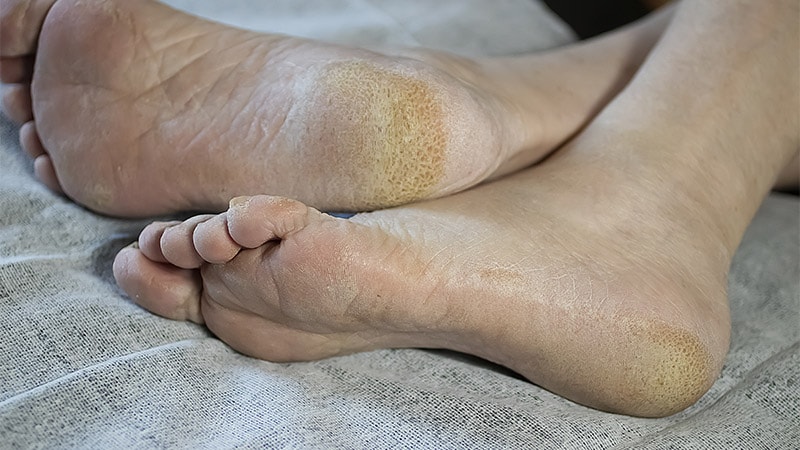“In Germany, a patient dies every 20 minutes from mostly vascular-related events caused by diabetes,” said Berthold Amann, MD, conference president of the German Society for Angiology (DGA). He spoke at the press conference of the Diabetes Autumn Conference of the German Diabetes Society (DDG), which was held in cooperation with the DGA.
Because stenoses and occlusions in the arteries of the pelvis and legs are a common result of diabetes, checking for circulatory disorders as early as possible is important, not least to prevent amputations, said Amann.
Patients with diabetes undergo amputations much more frequently than persons without diabetes, added Amann, who is chief physician of the Clinic for Internal Medicine at the Franziskus Hospital Berlin. More than 70% of the amputations to toes, feet, and legs were performed on patients with diabetes; over 30,000 are performed in Germany every year. Since the circulation has a crucial role in the prognosis and preservation of the extremities, patients with diabetes should be screened early on for circulatory problems.
This is all the truer if a wound has already occurred on the foot; 40% of patients with type 2 diabetes (ie, 90% of patients with diabetes) have (mostly asymptomatic) peripheral arterial occlusive disease (PAOD) when first diagnosed.
Measuring arterial circulation in the legs and the PAOD diagnosis are not trivial, because the calcareous hardening of the arteries in the lower leg renders the classic blood pressure measurement at the ankle no longer meaningful. “Normal” blood pressure values would be measured in the leg, according to Amann, despite the presence of a circulatory disorder, which would lull the physician and patient into a false sense of security.
The question of which methods are best suited to circulatory diagnostics with diabetes is the subject of lively discussion. In 2018, the British National Institute for Health and Care Excellence conducted a review in which they recommended duplex ultrasound, in contrast to other methods, such as plethysmography, blood pressure measurement at the ankle or toe, and oxygen pressure measurement, which were classified as unreliable or too costly.
A British study from 2021 showed that an early duplex ultrasound of the arteries in the leg can lead to a 24% reduction in the amputation rate. “In the United Kingdom, there are ongoing comparative method studies that will also influence our recommendations,” said Amann.
When diagnosing circulatory disorders in diabetes patients, the DGA recommends the following:
-
For every patient with diabetes, the arteries in the leg should be assessed as soon as possible after the diagnosis (pulses should be palpated, the ankle-brachial index should be determined). In the event of pathologic findings, the extent of the presumed PAOD should be estimated.
-
The most reliable and low-risk method for this estimation is duplex ultrasound. Should this method not be available, Doppler ultrasound (ankle-brachial index) and toe waveform analysis can be performed.
-
Arteriosclerotic involvement of the arteries in the leg must trigger the assessment of further vascular regions (such as arteries in the neck, abdomen, and, potentially, coronary vessels), and the patient must be classified and treated as being at high risk for myocardial infarction.
-
-
Reliable evidence about the patient’s circulation, preferably via duplex ultrasound, should be collected no later than when a wound is sustained on the foot. This assessment can also steer the mode of treatment of the circulatory disorder (catheter intervention with dilation vs vascular surgery).
-
After treating a circulatory disorder, relapses are easy to recognize with duplex ultrasound and can be treated preventively (annual duplex ultrasounds are sensible).
This article was translated from the Medscape German edition.
Source: Read Full Article
